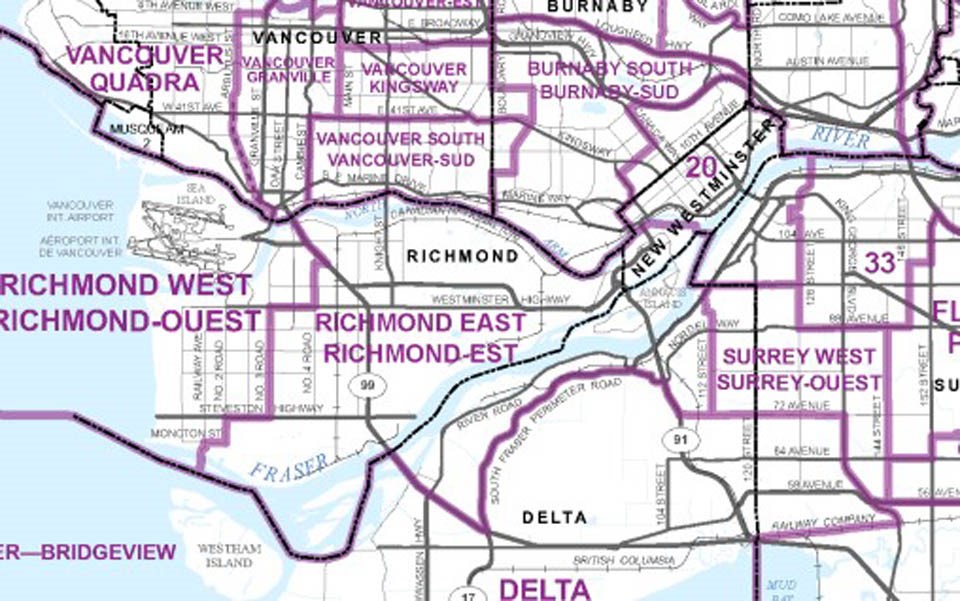The federal riding of Steveston-Richmond East could become just “Richmond East” and draw in a swath of Delta and a piece of New Westminster.
The proposed changes to B.C.’s federal riding boundaries – released this week by Elections Canada – are meant to reflect population trends with one riding being added to the province. Redistribution is generally done every 10 years.
The southern boundary of the Steveston-Richmond East riding, instead of going straight along Steveston Highway from No. 3 Road to the water, is proposed to cut vertically and incorporate the village area of the historic fishing neighbourhood into “Richmond West,” currently called “Richmond Centre.”
The boundary for the proposed Richmond East riding would incorporate a section of Delta along the southern edge of the Fraser River, bounded by Highway 99, the South Fraser Perimeter Road and 112 Street. Queenborough will also be included in this reconfigured riding.
Richmond resident Emmett Mark, however, thinks including parts of Delta and splitting some neighbourhoods is “illogical.”
“Aside from splitting communities of interest within and outside of Richmond, this map proposal dilutes Richmond’s voice in Parliament and should be opposed by Richmond residents,” Mark said.
The changes were proposed by the Federal Electoral Boundaries Commission for British Columbia in an “independent and non-partisan” process, according to Elections Canada.
In the U.S., by contrast, election boundaries are largely controlled by politicians – by state legislators - and there are often accusations of “gerrymandering,” whereby boundaries are drawn to favour one political party or another.
The chair of the committee, Justice Mary Saunders, explained the uneven growth in population in B.C. created a “domino effect” in redrawing the map in order to “be fair and have relative equality between voters” in federal ridings.
Mark, however, said population growth has been even in Richmond and he doesn’t think it warrants changes that go outside of the City of Richmond.
“Our city certainly has enough residents to retain two unique members of Parliament and meets population criteria set by the federal ‘Electoral Boundaries Readjustment Act,’” Mark said.
Elections Canada is asking for feedback on the proposed changes, either in writing or in person at various events between June and September.
A public consultation session on the proposed boundary changes will be held on Sept. 12 at 7 p.m. at the Richmond Olympic Oval (6111 River Rd.).



